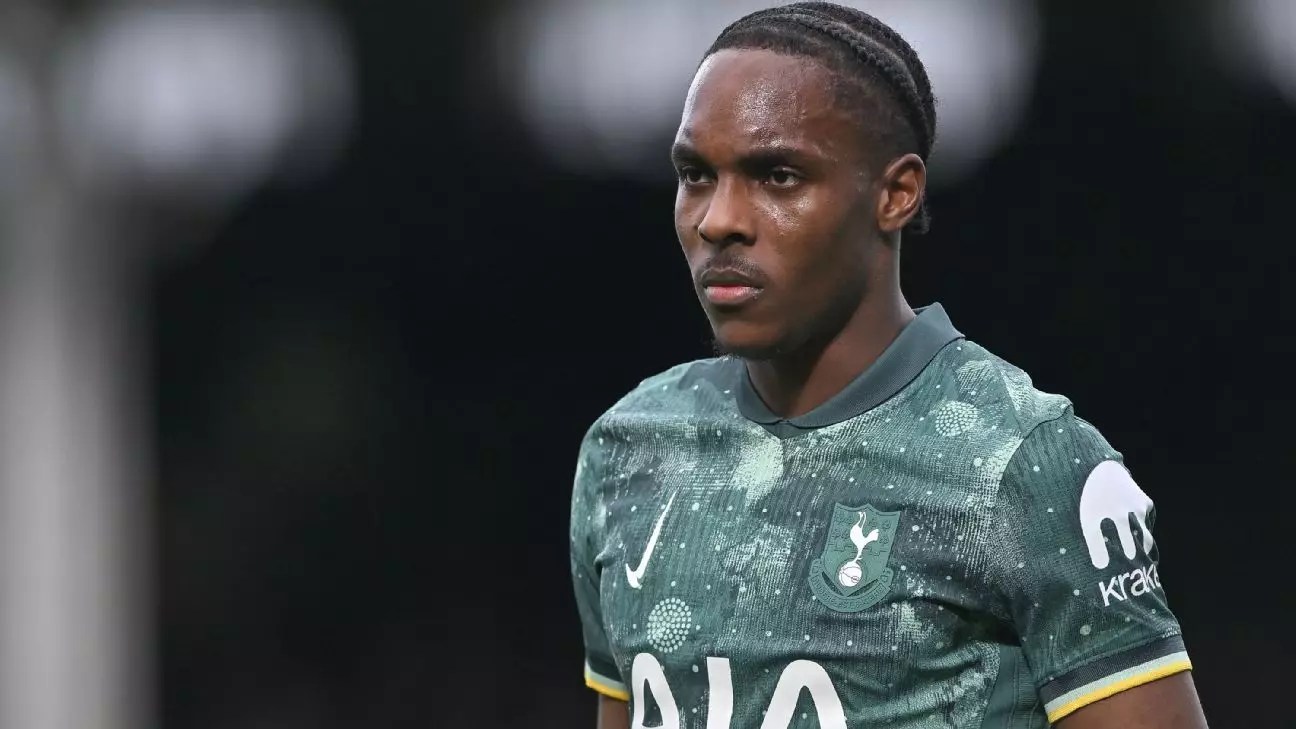In a significant shift within the football transfer landscape, Bayern Munich is steering its focus towards potential striker acquisitions as they anticipate that Tottenham Hotspur will activate the €60 million clause to secure Mathys Tel permanently. This impending departure of the 19-year-old, who exhibited glimpses of promise, places the Bavarians in a precarious position as they seek to fill the void left. With their aspirations firmly set on high-caliber talents like Viktor Gyökeres from Sporting CP and Nico Williams of Athletic Club, the urgency of intelligent recruitment has never felt more pronounced. Losing Tel may serve as a blessing in disguise for Bayern, pushing them towards securing more dynamic, impactful partnerships in the attacking line-up.
The challenge lies not just in bringing in new blood, but in adapting to the shifting dynamics of players’ market values. Numerous clubs are entering the fray for talents that can elevate their rosters, and Bayern must be shrewd to ensure that their investments not only yield immediate results but also contribute to long-term ambitions. Their strategies will embody an intriguing mix of urgency and foresight as the summer transfer window approaches.
West Ham’s Resurgence: Targeting the Future
Meanwhile, West Ham United seems poised to capitalize on this transfer window, reportedly leading the race to secure Sunderland’s promising midfielder, Chris Rigg. At just 17, Rigg comes with immense potential, and while Tottenham Hotspur lurks in the background, the Hammers’ determination showcases their intent to strengthen the middle of the park. This strategic move reflects a broader trend in the Premier League: prioritizing youthful talent over established, yet perhaps less vibrant, options.
Additionally, the Hammers are eyeing Lille’s Angel Gomes, whose status as a free agent could make him an astute addition. However, the club’s failure to meet his salary demands signals a need for more strategic financial negotiations. Greater emphasis should be placed on how clubs balance wage structures and acquisition strategies in a landscape that is often dominated by club giants and their financial clout.
Emerging Candidates: The Youth Movement
Arsenal’s concurrent interest in Ajax defender Jorrel Hato reveals an essential narrative in this summer’s transfer gossip – the race for younger, adaptable players who can make an immediate impact. Hato’s multifaceted skill set, allowing him to function as both a left-back and center-back, aligns perfectly with the evolving tactical demands of modern football. The competition is fierce, with heavyweights like Real Madrid and Chelsea pursuing his signature, challenging the Gunners to present a compelling case for recruitment.
This shift towards signing younger players is indicative of a longer-term strategy adopted by clubs around Europe. Traditional approaches that relied solely on experienced veterans are fading away, making room for a generation of talent that promises fresh energy and creativity.
Goalkeeping Conundrums: Bournemouth’s Predicament
AFC Bournemouth has placed Kepa Arrizabalaga atop its wishlist, signaling an awakening in their ambition to strengthen their squad. Yet, the complexities surrounding the potential deal highlight a fascinating intersection of finance and ambition — will the Spanish shot-stopper be willing to accept a pay cut? The negotiation intricacies, particularly when involving high-profile players, will shape the ethos of these clubs during the summer months.
Bournemouth’s willingness to explore permanent options amid competitive pressures demonstrates a greater trend toward building not just for today, but for sustainable success in the years to come. Their approach will serve as a litmus test, not only for their club continuity but also for the broader implications of financial negotiations in football, which too often overshadow the game’s core.
League of Interest: The Collective Pursuit of Talent
In parallel, West Ham’s pursuit of Udinese center-back Oumar Solet further underscores the intensifying competition among Premier League clubs. Multiple teams are eyeing obscure players from lesser-known leagues, suggesting that clubs are not just limited to scouting existing stars. In a league littered with financial disparity, a savvy eye for potential can be as valuable as landing an established superstar.
The addition of young talents such as Solet into the mix exemplifies how clubs can redefine their trajectories and disrupt traditional hierarchies. This proactive approach not only enhances squad depth but also aligns with evolving fan expectations for exciting, progressive football.
Overall, the forthcoming transfer window presents myriad possibilities for clubs aiming to refine their strategies and build versatile, resilient teams capable of competing at the highest levels. The decisions made will ripple through the financial and competitive frameworks of football, shaping the landscape for seasons to come.


Leave a Reply